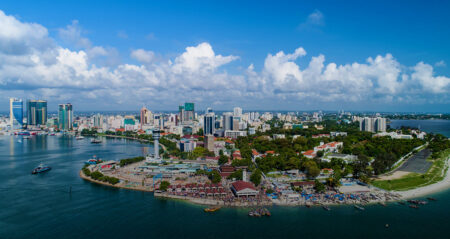- It is estimated that inaction on SDGs will cost the global economy an extra $38 trillion
- Currently, the SDG financing gap is at approximately $11–15 trillion per year
- By the end of 2050-2060, there will be over 1 billion climate refugees globally
Inaction in advancing the implementation of the Sustainable Development Goals (SDGs) could cost the global economy an extra $38 trillion per year by 2050 at the current rate of progress.
This is according to renowned business leader, campaigner, and author Paul Polman, who has called on the Kenyan private sector to raise the level of ambition in advancing the global goals to move the country forward faster.
With the SDG financing gap at approximately $11–15 trillion per year, or four times greater than current spending levels, Paul Polman noted that the $38 trillion dollars is approximately 20 per cent of the entire global economy, and the longer we wait, the more expensive it will become.
Polman was speaking during a leadership-in-action dialogue organised by Global Compact Network Kenya that brought together industry business executives and captains to share progress and discuss practical strategies to achieve the SDGs.
Read Also: Climate-smart agriculture: balancing food security with climate goals
The dialogue spotlighted practical actions businesses can take with a multiplier effect in advancing gender equality and diversity, climate action, water resilience, finance, and Investment to drive inclusive growth & prosperity for all.

The co-author of “Net Positive: How Courageous Companies Thrive by Giving More Than They Take”, Polman noted that the cost of inaction on the SDGs is significantly higher in Africa than in any other part of the world, currently estimated at $8-$9 trillion per year.
“It only costs us $4.5 trillion a year to implement the SDGs and the longer we wait the more expensive it becomes”, He noted.
On the climate emergency, Polman noted that the pace of action is not sufficient to reverse the worst impacts of the changing climate, warning that without strong leadership, global temperature will surpass the 1.5°C above pre-industrial levels to levels as high as 2.5℃ to 2.9℃ degrees, on the current trajectory.
Polman also called on the Kenyan business community to embark on responsible social cooperation, noting that, by the end of 2050-2060, we will have over 1 billion climate refugees globally. Therefore, we must act now by moving to a sustainable business model that is regenerative and restorative.
Polman called on the leaders present to rise to the occasion and lead from the front by addressing climate change and inequality in the country.
“This is the best moment to be a leader as we can really show our leadership and address climate change and inequality” he said.
He also noted that return on investment on climate initiatives is profitable as a company could get as much as 12 times on their investment.
Inaction On SDGs to Cost Global Economy an Extra $38 Trillion
With only 15 per cent of the SDGs on track, Global Compact Network Kenya Executive Director Judy Njino noted that the Forward Faster initiative represents a bold and ambitious commitment by the UN Global Compact to catalyze transformative action towards achieving the goals.
“The Forward Faster initiative provides a roadmap for action, outlining key areas where business leaders can make a difference. This includes promoting responsible business practices, advancing gender equality and diversity, combating climate change, and fostering inclusive growth and prosperity for all” she said.
The United Nations’ Sustainable Development Goals (SDGs) stand as a beacon of hope and progress as the world grapples with economic, social, and environmental challenges. However, achieving these goals requires substantial financial investment, making SDG financing a critical global issue.
One primary challenge in financing the SDGs is the vast amount needed. Estimates suggest that trillions of dollars are required annually to implement programs aligned with the SDGs.
Traditional funding sources such as government budgets and development assistance are insufficient, necessitating innovative financing mechanisms.

Read Also: UN boss Guterres calls for a global rescue plan for SDGs
Another emerging trend is blended finance, which combines public and private capital to mitigate risks and attract investment to SDG projects. By leveraging public funds to de-risk projects, blended finance can mobilize resources from the private sector, catalyzing sustainable development efforts.
Advancements in financial technology (FinTech) are also revolutionizing SDG financing by facilitating digital payments, crowdfunding, and microfinance solutions. These technologies improve access to capital for underserved communities and small businesses, fostering inclusive economic growth.
In conclusion, addressing the SDG financing gap requires a multi-faceted approach involving public, private, and innovative financing mechanisms. By harnessing the power of impact investing, blended finance, and FinTech, the global community can accelerate progress towards achieving the SDGs and building a more sustainable future for all.











